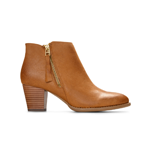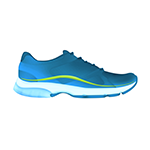
Over Pronation Shoes: A Complete Guide

Many people deal with over pronation on an almost-momentary basis, but many of them do so without even knowing it.1 In fact, outside of running shoe stores and podiatry clinics, this topic doesn’t really get much discussion.
So what exactly is over pronation? What medical issues do over pronation lead to, and how can we prevent it from occurring?
If you’re interested in taking steps to maintain the health of your ankles and feet, we’ve put together this guide to over pronation to get you started. Below, we’re outlining its causes and symptoms, teach you how to find out if you over pronate, discuss treatment and prevention options, and round up a list of our favorite over pronation shoes.
What is Over Pronation?
Everyone pronates at least a little bit. Part of the gait cycle, pronation refers to how much your foot rolls as you move forward, and regulates how your landing is absorbed and distributed across your foot.
Over pronation means that your foot rolls excessively inward as part of your gait cycle. This means that with each step you take, you’re putting weight on the inner edge of your foot, instead of on the ball of the foot, where it should go. This leads to decreased stability in your ankles and gives your foot a “splayed-out” look.
Over pronation occurs when the arch of the foot is extremely flexible. This can lead to a flattened, weakened, or even collapsed arch, which puts pressure on the muscles of your feet and leads to changes in how much your foot rolls inward when walking or standing.
Over pronation can have long-term consequences that can creep up gradually and lead to weakness, instability, and pain. Like experiencing stone bruises, bunions, or other foot deformities, the right shoe matters. If you over pronate, it’s very important to wear stability shoes that address this problem. The right shoes will help distribute your weight more evenly and help stave off some of the problems that can result from over pronation.
Is Over Pronation Bad?
Unfortunately, over pronation does put you at risk for certain injuries. Some common ailments linked to over pronation include:
- Achilles tendonitis
- Plantar fasciitis
- Shin splints
- Hip, knee, or back pain
- Heel spurs
- IT band pain
Although these issues are common in overpronators, most people won’t experience severe pain, especially not right away. That said, it’s easy to ward off the risks of over pronation. Shoes that provide more stability will counteract the effects of your excessive foot roll.
How To Tell If You Need Over Pronation Shoes
While over pronation isn’t necessarily noticeable to the average person, there are several symptoms that can make themselves known, especially during running, hiking, or activities that place a lot of load on the feet.
These symptoms include:
- Foot Pain or pressure along the insides of the soles
- A lack of stability in the ankles
- Stumbling or falling while running
- Corns or calluses
- Hammer toes
If you have none of these symptoms, however, and still want to know if you over pronate, there are several ways to do so, at home or with the help of an expert.
The Wet Test
The easiest way to find out if you over pronate is by visiting a podiatrist or physical therapist and undergoing a video gait analysis.
Essentially, you’ll be filmed from the feet up as you walk or run on a treadmill. The footage will then be evaluated in slow motion to determine what kind of stride you have. These tests are available at many running shoe stores and have been used for years by professional athletes to help determine the best running shoes for over pronation.
If you don’t have access to the doctors or equipment needed to perform a video gait analysis, don’t worry. Instead, try the simple and effective method known as “The Wet Test,” right from the comfort of your home.2 This will allow you to determine your arch type, which will then inform what kind of support your feet need. All you need is water and a piece of paper.
- First, pour a cup of water into a pan or tray. You only need enough to cover the bottom of your feet, so if you like, you can also just turn on the shower for a moment, then step into the tub until your feet are adequately wet.
- Next, place a sheet of blank paper onto the floor. Step onto it, taking care not to drag your foot across the page. You’re looking for a clean footprint. After you’ve made your print, repeat this step with the other foot as well.
- Evaluate your arch type. Depending on the shape your print makes, you’ll see that you have either a normal, low, or high arch.
If around half of the arch region is filled in, you have a normal arch. This usually means you don’t over pronate, and that you have the most common foot type.
If your footprint shows minimal contact in the arch region, you have high arches. People with high arches don’t experience a lot of foot roll as they move, and their feet don’t absorb much shock, either.
Finally, if the arch of your foot is mostly filled in, you have a low arch type. Your foot is collapsing inward as you walk or run, placing stress on your feet, ankles, and knees. This is known as over pronating.

How to Shop for Over Pronation Shoes
Now that you have a little inspiration, it’ll be helpful to know what to look for when shopping for over pronation shoes.
Look for a pair that includes stability features, which help distribute your weight more evenly as you walk and help absorb shock. We also recommend that you:
- Measure – Have both feet measured properly, to make sure your shoes adequately fit both.
- Timing – Stop by the store at the end of the day, when your feet are more swollen
- Come prepared – Bring your own socks, to ensure that the shoes fit over whatever you typically wear
- Opt for spacious over tightness – Choose a shoe that is roomy right then, since tight shoes won’t really stretch over time
A wear test is one of the best ways of finding the right shoe for your foot type and issue, whether you have over pronation, claw toe, or flat foot. The bottom line is that if a shoe feels flimsy, it’s probably not the right shoe type for you if you have over pronation.
The Best Shoes for Over Pronators
There’s no reason why your shoes can’t support your feet properly and make you look good while doing it. Some of our top stability shoes for over pronators include:
- Active sneakers – Looking for a stylish yet durable cross-trainer? An active performance shoe may be your best bet. With a reinforced heel for added stability and a firm, flexible, and removable orthotic insert, sneakers like these are perfect for walking and light exercise.
- Recovery sandals – Want to take a load off post-workout, without sacrificing stability? Slide into a recovery sandal that features extra cushioning for painless rejuvenation. This pair also features a textured footbed for a touch of massaging relief.
- Comfy, corporate-friendly flats – Seeking a shoe that will turn heads at the office, without putting too much pressure on your feet and knees? This slip-on loafer makes a statement while hugging your arches, resulting in hours of support. PS: It’s also available in a range of swanky colors.
- Heels that don’t hurt – Need a touch of elevation, but don’t want to wince with every step? These heeled sandals are perfect for weddings, parties, or any occasion that will have you on your feet for hours on end. With a deep heel cup and enhanced contour, there’ll be no need to carry your heels in hand at the end of the night.
- Comfortable, supportive Women’s boots – If you’re seeking a shoe that can stand up to whatever the hiking trails will throw at it, or need an option that’ll carry you from your house to the office without soaking your feet, make a splash with these classic supportive boots, which feature tons of arch support and a cute, no-nonsense upper.
No matter the shoe type, comfy flats, and heels, walking sandals, or active stability running shoes, you can find a style that will support your feet wherever you go.
Stay A Step Ahead of Over Pronation with Vionic Shoes
Armed with your new self-knowledge, you can now take steps to pick out shoes that will provide the right support, keeping you pain and injury free. You’ve done the wet test, figured out your high or low arch type, and determined that you’re an over pronator. So what comes next?
At Vionic, we know how important it is to find durable, supportive shoes that don’t sacrifice style. Whether you’re looking for a cute cross-trainer or hoping to find the perfect elegant pair for date night, we can help you find comfortable shoes that will look and feel great.
Check out our site to shop our shoes now, or visit our blog to learn more about how our team of podiatrists helps craft the perfect footwear for your active lifestyle.
Sources:
- Bumgardner. Wendy. “What Is the Average Number of Steps Per Day?” Verywell Fit. Updated 3 August, 2022. https://www.verywellfit.com/whats-typical-for-average-daily-steps-3435736#toc-how-many-steps-is-average
- Fuehrer, Dan. “This Simple Test Can Tell You Which Type of Arch You Have.” Runners World. 14 September, 2018. https://www.runnersworld.com/gear/a20806598/take-this-simple-test-to-learn-if-you-have-high-or-low-arches/










